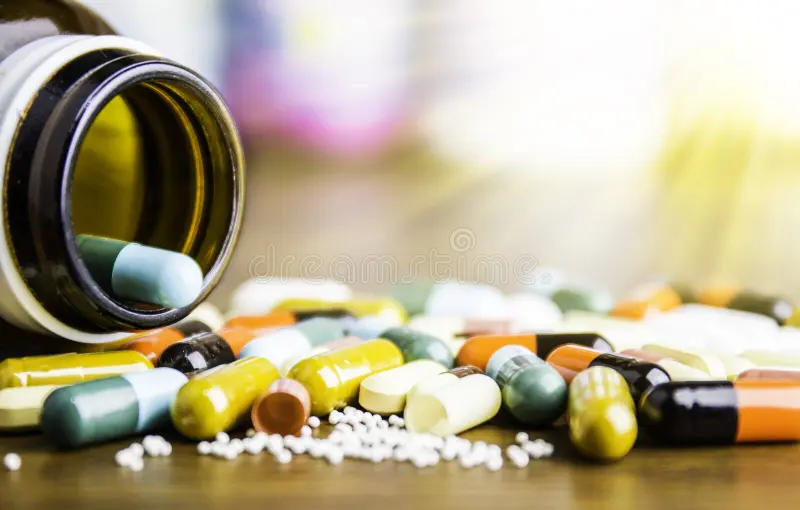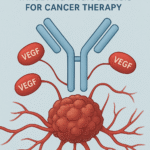Understanding Gastroesophageal Reflux Disease (GERD): Causes, Risk Factors, Pathophysiology, Treatment & Prevention
Gastroesophageal Reflux Disease (GERD) is a chronic digestive disorder that affects millions worldwide. While most people experience occasional heartburn or acid reflux, GERD refers to a more persistent and severe form of this reflux, often requiring long-term management. In this detailed guide, we explore GERD from its roots — including what causes it, how it affects the body, who’s at risk, and most importantly, how it can be managed and prevented.
What is GERD?
GERD stands for Gastroesophageal Reflux Disease, a condition where stomach contents, including acid, frequently flow back into the esophagus — the tube connecting the mouth and stomach. This backward flow, known as acid reflux, irritates the lining of the esophagus and causes symptoms such as heartburn, regurgitation, chest pain, sore throat, and even chronic cough.
Unlike occasional reflux, GERD is a chronic condition and can lead to complications such as esophagitis, Barrett’s esophagus, and esophageal strictures if left untreated.
Pathophysiology of GERD
To understand GERD, we need to look at how the digestive system normally works. Between the esophagus and the stomach lies the lower esophageal sphincter (LES) — a ring-like muscle that opens to allow food into the stomach and closes to prevent stomach contents from flowing backward.
In GERD, the LES becomes weak or relaxes inappropriately, allowing acidic gastric contents to rise up into the esophagus. This acid is not meant to be in contact with the delicate esophageal lining and causes irritation and inflammation.
Key mechanisms involved:
- Lower Esophageal Sphincter Dysfunction
Weakness in the LES is central to GERD. Factors such as fatty foods, alcohol, smoking, and certain medications can relax the LES abnormally. - Delayed Gastric Emptying
When the stomach empties slowly, it increases gastric pressure, which can push stomach contents back into the esophagus. - Hiatal Hernia
This condition occurs when part of the stomach pushes through the diaphragm into the chest cavity, disrupting the normal pressure gradient and promoting reflux. - Esophageal Motility Disorders
Abnormal esophageal contractions can reduce the effectiveness of the esophagus in clearing refluxed acid. - Impaired Mucosal Defense
The esophageal lining lacks the protective mucus and bicarbonate buffer that the stomach has, making it more susceptible to acid damage.
Causes of GERD
While the underlying mechanism often involves LES dysfunction, several other factors can cause or contribute to GERD:
- Dietary factors: Fatty foods, chocolate, caffeine, spicy foods, citrus, onions, garlic, peppermint, and alcohol.
- Obesity: Increased intra-abdominal pressure contributes to reflux.
- Smoking: Reduces LES pressure and impairs mucosal defenses.
- Pregnancy: Hormonal changes and pressure from the growing fetus can lead to reflux.
- Certain medications: Including NSAIDs, calcium channel blockers, antihistamines, sedatives, and antidepressants.
- Stress and anxiety: May alter gastrointestinal motility and acid secretion.
- Tight clothing or bending over after meals: Can increase abdominal pressure and trigger reflux.
Risk Factors for GERD
Some individuals are more susceptible to GERD due to a combination of genetic, lifestyle, and physiological factors. Major risk factors include:
- Age: The risk increases with age due to weakening of the LES and reduced esophageal motility.
- Obesity: A leading risk factor, particularly central obesity.
- Sedentary lifestyle
- Smoking and alcohol use
- Poor dietary habits: Large meals, lying down after eating, and eating late at night.
- Family history of GERD
- Hiatal hernia
- Chronic diseases: Diabetes, scleroderma, and connective tissue disorders.
Common Symptoms of GERD
GERD symptoms can vary from person to person. The most commonly reported ones include:
- Heartburn: A burning sensation behind the breastbone, often after eating or lying down.
- Regurgitation: Sour or bitter-tasting acid backing up into the throat or mouth.
- Chest pain: Often mistaken for heart issues.
- Difficulty swallowing (dysphagia)
- Chronic cough, hoarseness, or sore throat
- Asthma-like symptoms
- Sensation of a lump in the throat
Diagnosis of GERD
Diagnosis is often based on symptoms, but further testing may be needed in chronic or complicated cases:
- Clinical evaluation: A thorough history and symptom analysis.
- Upper endoscopy (esophagogastroduodenoscopy or EGD): To visualize inflammation or complications like ulcers or Barrett’s esophagus.
- 24-hour pH monitoring: Measures acid exposure in the esophagus.
- Esophageal manometry: Assesses esophageal muscle function and LES pressure.
- Barium swallow X-ray: Highlights structural problems like hiatal hernia or strictures.
Treatment of GERD
Lifestyle Modifications
The first and often most effective step in managing GERD involves changes in behavior and daily habits:
- Weight loss if overweight or obese.
- Avoiding trigger foods and beverages.
- Eating smaller, more frequent meals.
- Not lying down immediately after eating — wait at least 2–3 hours.
- Elevating the head of the bed to reduce nighttime reflux.
- Avoiding smoking and alcohol.
- Wearing loose-fitting clothes.
Medications
- Antacids: Provide quick relief by neutralizing stomach acid. (e.g., aluminum hydroxide, magnesium hydroxide)
- H2 receptor blockers: Reduce acid production. (e.g., ranitidine*, famotidine)
- Proton pump inhibitors (PPIs): More potent acid suppression. (e.g., omeprazole, esomeprazole, pantoprazole)
- Prokinetic agents: Help empty the stomach faster and improve LES tone. (e.g., metoclopramide, domperidone)
- Alginates: Form a barrier that floats on stomach content, reducing reflux episodes. (e.g., Gaviscon)
*Note: Ranitidine has been withdrawn in several countries due to safety concerns.
Surgical and Endoscopic Treatments
In patients not responding to medical therapy or those who wish to avoid lifelong medication, surgery may be considered:
- Nissen fundoplication: The top of the stomach is wrapped around the LES to strengthen it.
- LINX device: A ring of magnetic beads placed around the LES to reinforce closure.
- Endoscopic therapies: Include radiofrequency treatment and endoscopic suturing.
Complications of Untreated GERD
If left unmanaged, GERD can lead to serious complications, including:
- Esophagitis: Inflammation that can lead to ulcers or bleeding.
- Strictures: Narrowing of the esophagus due to scar tissue.
- Barrett’s esophagus: A precancerous condition with changes in the esophageal lining.
- Esophageal cancer: Although rare, the risk increases significantly with long-standing Barrett’s esophagus.
GERD in Special Populations
GERD in Infants and Children
GERD can affect babies and children, presenting as irritability, feeding problems, frequent vomiting, or respiratory issues. While many infants outgrow reflux, persistent or severe cases may require evaluation and treatment.
GERD in Pregnancy
Due to hormonal changes and abdominal pressure, pregnant women frequently experience GERD symptoms. Lifestyle measures and antacids are usually the first-line treatment, with caution in drug use.
Prevention of GERD
Although not all causes can be prevented, especially anatomical ones, many GERD cases are preventable through lifestyle changes:
- Maintain a healthy weight.
- Avoid large meals, especially before bedtime.
- Elevate the head while sleeping.
- Stay physically active.
- Avoid known dietary triggers.
- Don’t smoke or use tobacco products.
- Manage stress effectively.
These steps are not only helpful in preventing GERD but also crucial in reducing recurrence once the symptoms are under control.
Conclusion
Gastroesophageal Reflux Disease is more than just a nuisance — it’s a chronic condition that can severely impact quality of life and lead to complications if left unmanaged. Fortunately, GERD is highly treatable with a combination of lifestyle modifications, medications, and in some cases, surgical interventions.
The key lies in early recognition, personalized treatment, and consistent preventive measures. If you’re experiencing persistent symptoms like heartburn or regurgitation, it’s important to seek medical advice and begin a management plan that works for you.
Frequently asked questions
1. What is Gastroesophageal Reflux Disease (GERD)?
Gastroesophageal Reflux Disease (GERD) is a chronic digestive disorder where stomach acid or, sometimes, stomach contents, flow back up into the esophagus (the tube connecting your mouth and stomach). This “acid reflux” can irritate the esophageal lining, leading to uncomfortable symptoms and potential complications if left untreated.
2. What are the main causes of GERD?
GERD primarily occurs due to a weakened or improperly functioning lower esophageal sphincter (LES), a muscle that typically closes to prevent stomach contents from re-entering the esophagus. Factors contributing to this dysfunction include hiatal hernia (where part of the stomach pushes through the diaphragm), increased abdominal pressure (e.g., due to obesity or pregnancy), and certain lifestyle habits or foods that relax the LES.
3. What are the common risk factors for developing GERD?
Several factors can increase your risk of GERD, including obesity, pregnancy, smoking, a diet high in fatty or spicy foods, consuming trigger foods like caffeine, chocolate, and peppermint, drinking alcohol, and lying down too soon after eating. Certain medications and medical conditions can also contribute.
4. How does GERD affect the body (Pathophysiology)?
The pathophysiology of GERD involves the reflux of gastric contents (acid, pepsin, bile) into the esophagus, leading to irritation and inflammation of the esophageal lining (esophagitis). This repeated exposure can cause cellular changes, impair esophageal clearance of acid, and in severe cases, lead to complications like ulcers, strictures (narrowing of the esophagus), and Barrett’s esophagus, which is a precancerous condition.
5. What are the typical treatment options for GERD?
Treatment for GERD often involves a multi-pronged approach. Lifestyle and dietary modifications are usually the first step, such as weight loss, avoiding trigger foods, eating smaller meals, and elevating the head of the bed. Medications like antacids, H2 blockers, and proton pump inhibitors (PPIs) are commonly used to reduce stomach acid. In persistent or severe cases, surgical interventions like fundoplication may be considered to strengthen the LES.
6. Can GERD be prevented?
While not all cases are preventable, many instances of GERD can be mitigated through lifestyle changes. These include maintaining a healthy weight, avoiding known trigger foods and beverages, quitting smoking, limiting alcohol intake, not lying down immediately after meals, eating smaller, more frequent meals, and elevating the head of your bed when sleeping.
7. What are the key symptoms of GERD?
The most common symptoms of GERD include frequent heartburn (a burning sensation in the chest, often worse after eating or lying down) and regurgitation (the backwash of food or sour liquid into the throat). Other symptoms can include difficulty swallowing, chest pain, chronic cough, hoarseness, a sour taste in the mouth, and in some cases, symptoms resembling asthma.
For more regular updates you can visit our social media accounts,
Instagram: Follow us
Facebook: Follow us
WhatsApp: Join us
Telegram: Join us



